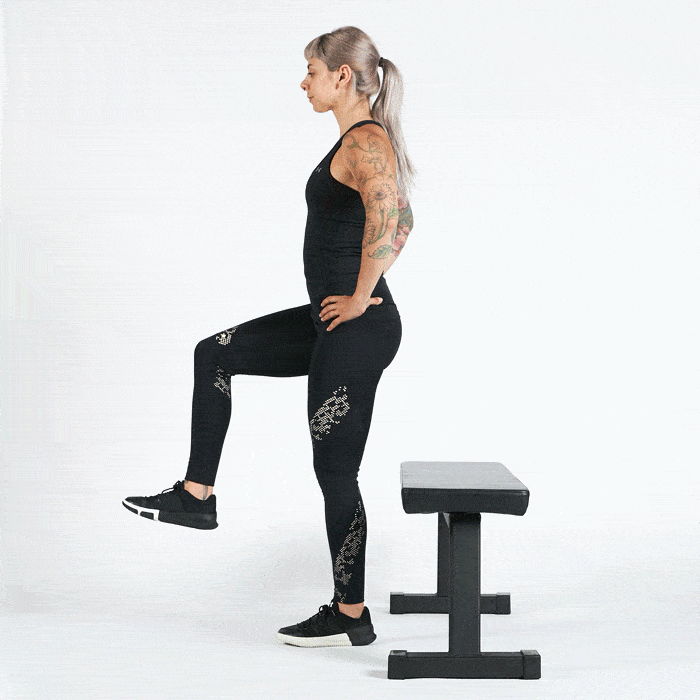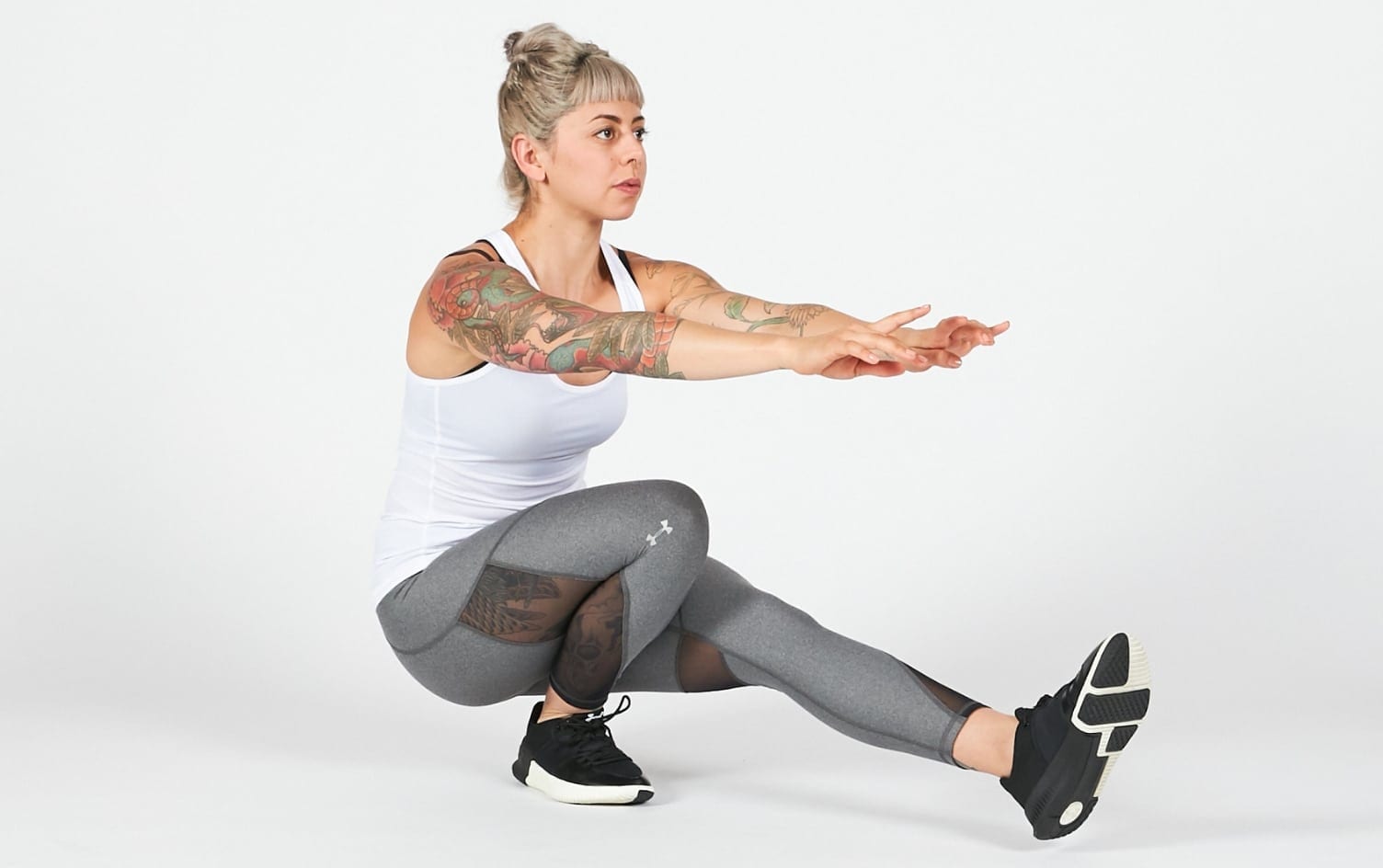There’s a lot to love about bodyweight exercises: They’re accessible (requiring limited to no equipment), effective and perfect for beginners who need to build a base of strength and nail proper exercise form before adding weight.
What’s more, bodyweight training can help you develop the functional strength you need to perform everyday tasks — like squatting to pick up a heavy load of laundry or carrying an armload of groceries — without getting injured or sore. “A lot of people get injured in a position where they’re weak or vulnerable,” says Francheska Martinez, a certified personal trainer in Austin, Texas. Bodyweight training can help you become stronger in different ranges of motion, so when you inevitably find yourself in those positions, your body knows how to respond, Martinez adds.
However, once you’ve done bodyweight training for a few weeks, it can start to feel too easy. Eventually, you reach a point where you need to take things up a notch to continue seeing gains. Thankfully, there are several strategies you can use to increase the difficulty of bodyweight exercises — without banging out hundreds of air squats.
SLOW DOWN
Instead of rushing through a set of bodyweight squats or pushups, Martinez recommends taking 3–4 seconds to lower into the bottom position. Then, hold there for one count before you return to the top. You can apply this strategy to virtually any bodyweight exercise from lunges to pullups to stepups.
Slowing down increases your time under tension, giving your muscles more of a challenge than they would get if you mindlessly move from rep to rep.
MAKE IT EXPLOSIVE
Boost the intensity of standard bodyweight exercises like squats, lunges and pushups by turning them into plyometric or explosive exercises. To do this, simply speed up the move and focus on pushing through your feet or hands to jump, hop or explode upward so your feet or hands leave the ground.
Not only will plyometric exercises tire you out sooner (they take more energy than standard versions of the exercises), but you’ll develop explosive power that will have a positive carryover effect on other activities, like running. For example, the authors of a 2018 plyometrics study published in the European Journal of Sport Science suggest plyometric training could increase strength, which could then lead to faster running speeds.
Great plyometric bodyweight moves include single-leg bounds, squat thrusts (a burpee without the pushup), high knees, squat jumps, plyo lunges, plyo pushups, mountain climbers and box jumps.
GO UNILATERAL
If you’re bored with standard bilateral exercises like squats, try a unilateral variation (Think: single-leg squats to a box, stepups, staggered-stance squats, lateral lunges and skater squats). By shifting the bulk of the work onto a single leg or side of your body, you’ll challenge your balance and coordination while building unilateral strength, which only makes you stronger overall.
Unilateral strength exercises may also help runners avoid overuse injuries by balancing their dominant and non-dominant sides. For example, runners who lack hip strength on one side of their body may be more susceptible to single-leg overuse injury, according to a study in the Clinical Journal of Sport Medicine.
Here are some great unilateral moves to try:
STEPUPS

Stand in front of a box, bench or sturdy chair. (Note: The height of the box, bench or chair depends on your current level of strength and flexibility, so start lower and work your way up.) To initiate the movement, plant one foot on the box, bench or sturdy chair. Then, lean forward slightly, and press through your planted heel to lift your body until your working leg is straight. Slowly lower your opposite foot back down to the floor and repeat for reps.
PISTOL SQUATS

Extend your arms in front of you for balance. Raise one foot a few inches off the floor and bend your standing knee to slowly lower your hips (most of us will stand in front of a box, bench or chair and will squat down to that, letting your other leg float out in front of you). Keep your chest high and your knee directly over your ankle on your working leg. Tap the box, bench or chair with your glutes and drive through your planted foot to return to standing. Repeat for reps.
To make it easier: Raise the height of the box, bench or chair. You can also hold on to the handles of a suspension trainer, using only as much support as you need to complete the movement.
SINGLE-LEG SQUATS TO A BOX

Position a box, bench or sturdy chair several inches behind you and begin the move by standing on one leg. Then, sit back into your hips as far as possible while maintaining balance, making sure to keep your stance knee in line with your toes. Your non-working leg floats out in front of you. Tap your glutes on the box, bench or chair; avoid dropping all your weight. Push through the heel of your working foot to drive back up to standing. Complete all reps on one leg before switching to the opposite leg.
PLAY WITH WORK/REST INTERVALS
Manipulate your work/rest intervals to turn your bodyweight workout into a high-intensity interval training (HIIT) routine. So, you could work for 30 seconds and rest for 30 seconds. Or you could increase the intensity by doing 6–8 rounds where you alternate 40 seconds of work with 15-second rest periods, making sure to focus on getting quality reps during your working sets, Martinez says. “And if you want to make that more challenging, you could go up to 60 seconds and then do 10 seconds of rest,” she adds.
Or, you could try the classic Tabata protocol, a form of HIIT where you alternate 20 seconds of work with 10 seconds of rest for eight total rounds (you’ll end up doing 4 minutes of actual work). This workout has been shown to improve both aerobic and anaerobic fitness more effectively than moderate-intensity cardio, according to the original 1996 Tabata study. Great bodyweight exercises to try with the Tabata protocol include squat jumps, plyo lunges, squat thrusts and mountain climbers.
ADD ROTATIONAL MOVEMENTS
Not only will adding rotational — or twisting — elements to standard exercises like squats and glute bridges make the move more of a mental challenge, but you’ll increase range of motion through your thoracic spine in particular, which “is designed to rotate, but for most people it doesn’t rotate very often,” Martinez says.
For example, you could take your standard glute bridge exercise and add a cross-body reach. To do it: Push your hips up into a glute bridge and, while keeping your hips elevated, reach one hand across your torso toward the floor on the opposite side. Return your hips to the floor and perform another glute bridge, this time reaching with the opposite hand.
Or, you could also try a twisting mountain climber where, instead of driving your knees forward, you alternate reaching each knee toward the opposite elbow.
SYNCHRONIZE YOUR BREATH
Hopefully, you already know not to hold your breath during exercise. Well, you can take it one step further and synchronize your movement to your breath, as this can boost core engagement during any exercise.
To do it, focus on breathing in through your nose during the eccentric, or lengthening portion of the exercise, and exhaling through your mouth during the concentric, or shortening portion of the exercise. “Exhaling through the mouth allows you to create a strong contraction of the abdominal muscles,” Martinez explains.
During the squat jump, for example, inhale through your nose as you lower into the bottom position, and exhale through your mouth as you jump.




